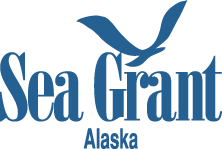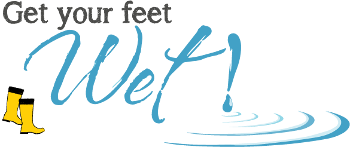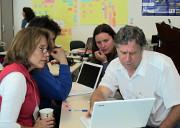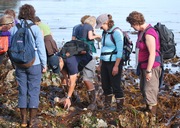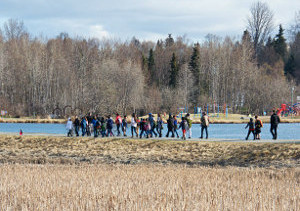A 3-4 Week Unit for Primary Level
Essential Question:
- What are the characteristics of the living and nonliving things you discover in the water?
Enduring Understandings:
- Living and nonliving things in Alaska waters come in a great assortment of colors, shapes, and sizes.
- Living things move, grow, and change.
Ocean Literacy Principle Addressed:
- The ocean supports a great diversity of life and ecosystems.
This unit is designed for kindergarten, but could be adapted to other primary grades. Students discover aquatic environments and the living and nonliving things that are found in them, through active observation outdoors and in the classroom. They practice skills of recording, comparing, questioning, and communicating. Science notebooks are used throughout the unit to help students understand and organize information.
 |
Investigation 1: Backyard Water Discovery Students begin their discovery of aquatic environments, and start to notice that water is all around them, in their neighborhoods, backyards, oceans, rivers, ponds, and creeks. They practice the scientific skills of observing, recording observations and data, comparing, and communicating. Activity 1A: Globe Toss (25 minutes) Where is the water around us? Activity 1B: What’s in the Jars? How is water different from the land? Activity 1C: Water Detectives Where is the water in our neighborhood? Activity 1D: Let’s Make a Map Can we show where the water is around us? Activity 1E: Take a Close Look What do we see when we look closely at water? |
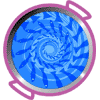 |
Investigation 2: Sea Soup What is in the water around us? |
 |
Investigation 3: Living and Nonliving Things in the Water Students assemble simple puzzles to learn more about aquatic animals and their life cycles. They look closely at the parts of a small aquatic animal with a listening and drawing activity, and learn to describe and explain the things in aquatic environments by making mini-books, a class book, and a large class mural. Activity 3A: Aquatic Puzzles How do we know living and nonliving things are in the water around us? Activity 3B: Drawing from Description What parts of an animal make it special? Activity 3C: How Does It Look and Feel? What words can you use to describe this aquatic living or nonliving thing? In Activity 3D: Our Book about Things in the Water How can you describe the characteristics of this living or nonliving thing? Activity 3E: Making a Mural How do we know living and nonliving things are in the water around us? |
 |
Investigation 4: Field Trip Session What can we find in the water? |
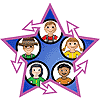 |
Investigation 5: Sharing What We Know How do we find out information? |
Authors:
Jennifer Thompson, Kindergarten Teacher, Juneau
Chris Thomas, Retired K-1 Teacher, Juneau
Stephanie Hoag, Curriculum Consultant, Juneau
Marla Brownlee, Alaska Sea Grant
With special thanks to Dayna Focht of Juneau for ideas and activities.
